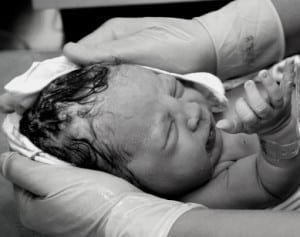
The study was published in the British Medical Journal and according to Professor Peter Brocklehurst the findings only help women with low risk pregnancies a choice of birth settings. The authors added that expectant mothers and their partners should be free to choose the place of birth of their child and should discuss the choices freely with their doctors.
The team said that although there have been various debates going on about the place of birth, very few studies have been done to analyze which place is safest for mothers and their newborns.
Brocklehurst and team set out to determine what the outcomes and interventions might be at four birthplace settings across all NHS trusts in the UK. These were the would-be-mom’s home, a freestanding midwifery unit, Midwife-led units at a hospital which also had an obstetric unit and an obstetric unit.
The researchers then collected data on the different adverse outcomes that can occur during child birth. These were upper arm or shoulder injuries during birth, Meconium aspiration syndrome which means feces in the lungs of the baby, early neonatal death, Encephalopathy or brain injury and stillbirth after start of care in labor.
The team analyzed 64,538 full term infants whose mothers had low-risk single pregnancies and no multiple births. They checked the Body Mass Index (BMI), ethnic group and maternal age.
They found that in all the different settings the overall rate of adverse outcomes was 4.3 per 1000 babies. There was no important difference between an obstetric unit and a non-obstetric unit birth.
However for first-time moms who gave birth at home the risk of adverse outcomes was 9.3 per 1000 births which was more than double the risk at all other birth settings. Compared to individual birth settings, the risk for these moms was much higher if they chose to give birth at home.
For women who had already given birth once and had uncomplicated pregnancies, the risk of home birth was not significantly different from other unit births.
The intervention rate during labor was considerably lower in all non-obstetric unit settings, compared to obstetric unit ones.
45% of first time mothers were transferred from a non-obstetric unit setting to an obstetric one, compared to just 13% of those giving birth for the second, third, etc. time.
The researchers noted that the findings were important both for mothers and policy makers.
“These results will enable women and their partners to have informed discussions with health professionals in relation to clinical outcomes and planned place of birth. For policy makers, the results are important to inform decisions about service provision and commissioning.”
The team is now studying the cost-effectiveness of different birth settings. Compared to giving birth in an obstetric unit, one that occurs in a midwifery unit is £130 (US$200) cheaper, while a home birth is £310 (US$496) cheaper.
Maureen Treadwell, from the Birth Trauma Association feels, “These findings are useful but are based on a study of only 5,000 women in each type of midwifery unit and do not tell us how many babies died or were brain damaged in each group.”
Related Articles:






